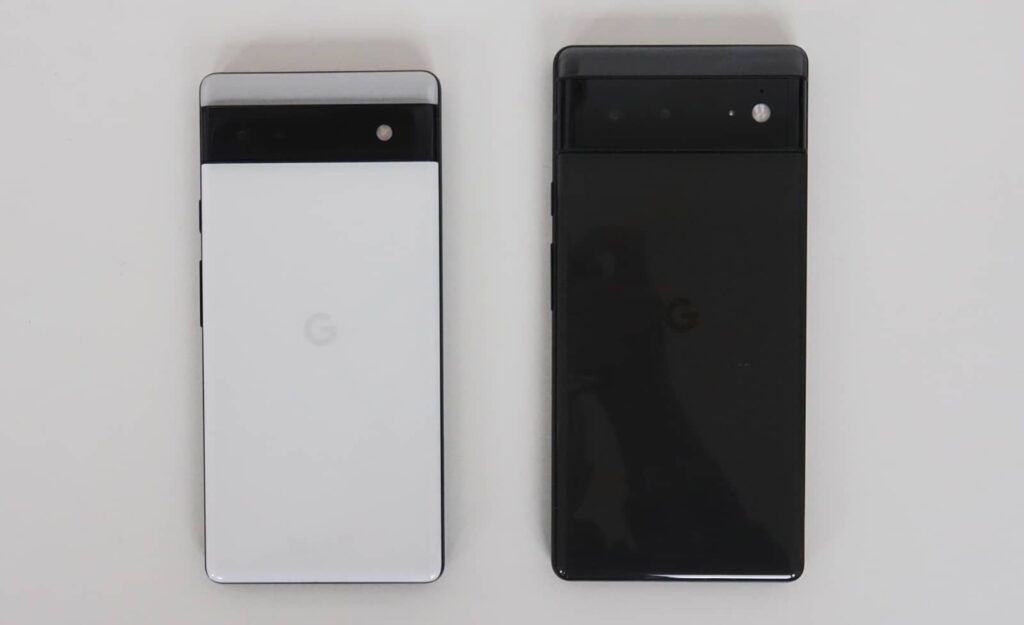Quick review
The good
The not-so-good
There’s a lot in the world of 5G mid-range phones, but Google is giving that category another go, as the “a” series returns for the Pixel 6a. Is this like a Pixel 6 made to be more economical, or something else entirely?
If you’re considering buying a phone right now, there’s a good chance you’re looking at something in the mid-range, simply because of what it offers.
Mid-range phones tend to trickle in the tech, offering value and performance, and providing something suited to more price points. It’s no wonder so many manufacturers strive to offer a mid-range phone these days, and nearly everyone has something there. While companies like Oppo and Motorola have their feet firmly planted here, not everyone does.
Google used to, originally offering the “a” series of phones for the mid-range, but it’s a series that missed out on release in Australia last year. We saw the Pixel 3a back in 2019 and the Pixel 4a in 2020, but in 2021, there was no Pixel 5a locally. It existed overseas, but Google didn’t launch it in Australia.
But this year, Google’s Pixel a is back, arriving in the Pixel 6a. Previously, the Pixel “a” models have been huge winners, nailing a balance between features and price. Does the Pixel 6a deliver in much the same way?
Design
With a template already set in the Pixel 6 and Pixel 6 Pro, you probably won’t be surprised to find Google taking roughly what worked here and applying it to a smaller size.
While the Pixel 6 Pro we reviewed last year is a 6.7 inch phone and the Pixel 6 standard is a 6.4 inch, the Pixel 6a is a 6.1 inch, so it’s a little smaller, but quite similar.
The look is more like the Pixel 6 with slim bezels on the screen, while the back uses the same style of crossbar element for the camera, pushing the back off from a table and giving the phone a different look.
Google has skipped the glass on the 6a, relying instead on a plastic back with an alloy frame, but keeping the water resistance, something the Pixel “a” series range has not offered before. Now with IP67 water resistance, you can essentially wash dirt off your phone if you need to.
At its core, the Pixel 6a is basically a smaller Pixel 6 and Pixel 6 Pro, though one made to be a little more budget focused. Small instead of big, plastic instead of glass.
Features
Under the hood, much of it is similar, as Google opts for its Tensor chip in the Pixel 6a, much like you’d get in the larger Pixel 6. That chip is paired with 6GB RAM and 128GB storage, with similar connections to the 6, just not the 6 Pro.
While the 6 Pro gets support for 5G on both sub-6 and mmWave technologies, the Pixel 6a keeps things like the Pixel 6: sub-6 5G only. That’s fine, mind you — pretty much every 5G phone in Australia outside of the Pixel 6 Pro supports sub-6 only, so you’re in good company.
Alongside the sub-6 5G, the Pixel 6a comes with 802.11a/b/g/n/ac/ax WiFi 6E, Bluetooth 5.2, GPS, and Near-Field Communication (NFC) for Google Pay.
The cameras are designed to look similar to the Pixel 6, too, but the main one is very different. While you’ll see the same 12 megapixel F2.2 ultra-wide, the main camera isn’t the 50 megapixel F1.85 with laser autofocus from the Pixel 6. Rather, you’ll see a 12 megapixel F1.7 without the same autofocus, more like the camera found in the Pixel 5.
In fact, going on specs alone, the main camera in the Pixel 6a is exactly the same main camera used in the Pixel 4a with 5G and Pixel 5. It’s a similar situation with the front camera, as the Pixel 6a’s 8 megapixel F2.0 front camera is the one used on the front of the Pixel 6, too.
Then there’s the screen, which is of course smaller, making the 6a the baby of the bunch. This is a 6.1 inch OLED display sporting a resolution of 2400×1080 for Full HD+, and a pixel clarity of 429 pixels per inch. You won’t get smooth motion technology, using a 60Hz screen panel, and while Gorilla Glass protects the display, it’s the older Gorilla Glass 3 technology, not like Gorilla Glass Victus used on the bigger Pixel models. There is a first for the Pixel a series, however, with IP67 water resistance in the design.
This all comes with a 4410mAh battery, offering support for fast charging, but not wireless charging.
In-use
That is the Pixel 6a, and shock horror, it arrives with Android 12, even if we’re only a few months out from the proper official launch and release of Android 13. No doubt Google’s latest and greatest will be rolled out to the Pixel 6a quickly, but for now you get Android 12, and that’s totally fine.
As we’ve seen on plenty of phones since its release last year, it’s an OS that’s easy to adapt to with more in the way of customisation, notably some easy ways to change the look of the operating system based on the pictures you give it, plus a drop down notification bar that gives easy access to Google Pay.
It’s also nice to see Google has kept the fingerprint sensor in the range, and rather than switch to the rear sensor, the in-screen sensor does a decent job, even telling you when it detects not a full fingerprint, but a partial one.
Oh, and one last thing: the power and volume buttons on the right edge actually feel better in the 6a than they do in the 6 Pro. There’s just a little bit more travel, and they don’t feel stuck in the frame, which is a problem on the big brother.
Performance
Performance, however, is shared with its siblings, and that can only be a good thing.
While you get a touch less RAM set to 6GB, you’ll find the Google Tensor chip from the Pixel 6 range make an appearance here on the Pixel 6a. That’s great news because that thing is fast and suited to much of what you might want to throw its way.
Unfortunately, we don't have any of our regular synthetic benchmarks as Geekbench 5 wouldn't run on our Pixel 6a review unit. Weirdly, we couldn't run any of our regular benchmark tests (Geekbench or Antutu) on the model we had for review, though we're not anticipating a dramatic difference between what it and the Pixel 6 can do, though less RAM will likely mean slightly lower scores.
However, in-app testing showed it to be quite powerful, providing some solid mid-to-high performance for a phone firmly planted in the mid-range, even if it's in the upper end of that.
Mobile testing showed the Pixel 6a can deliver decent speeds, too, not that sub-6 5G testing is particularly special anymore.
Depending on where you are and what your telco performance is like, you should see fast speeds, though hitting the maximum 2Gbps will come down to a lot of factors.
Our testing of the Pixel 6a in Sydney, Australia found speeds ranging from 100 to 300Mbps mostly, though you may be able to do better.
Camera
While the system spec is close to spot on shared with the Pixel 6 and Pixel 6 Pro (minus the differences in memory), the camera is different.
Rather than go for the 50 megapixel camera in the bigger model, you'll have the 12 megapixel from the Pixel 5, which we last saw a good two years ago. That's a totally fine camera still, mind you, but not quite what you might expect from a model named after the Pixel 6.
Despite that, the camera quality is decent enough, delivering similar results to the Pixel 5 from the main camera, while the ultra-wide doesn't quite deliver as lovely a performance in low light.
Shots in daylight are often crisp and clear, with strong colours in vibrant imagery, while low light works nicely, but isn't quite the performer as what we saw in the Pixel 6 Pro.
Still, the results are quite strong, and the portrait shots offer some of the better results you can find from any mid-range phone, thanks to Google's expertise in portrait processing, something the Pixel is well known for.
Battery
The camera isn't the only major change for the 6a, with a smaller battery in this phone as well, and one that follows the mediocrity 5G phones have been delivering for a couple of years now.
Even so, it can feel like the Pixel 6a gets under the regular mediocrity with something a little worse. Despite its 4410mAh battery, you'll only squeeze a maximum of a day, and will really want to aim for a charge nightly.
Excessive screen time might see you needing to charge the phone more, though one test showed that it is possible to make the 6a not feels completely depleted before bed.
Unfortunately, the phone managed to also waste a good 20 percent of its battery while we were doing nothing more than sleeping for six hours, begging the question just what it was actually doing. In that test, we went to bed with 40 percent and woke up with 20, when the phone should have only trickled down little by little, not nearly that much.
Google's battery optimisation algorithms will likely help with that over time, but much like how the iPhone SE struggles to hit beyond a day of battery life, so too does this other small phone.
Value
At least the price is more compelling, or a little more so.
At $749 in Australia, Google is going for the crowd more likely to consider the $719 iPhone SE from this year. There are differences between the models, notably the difference in cameras jumping from one to two, but we can see what Google is getting at here.
Overall, it's not a bad value, though there's more going on in the mid-range Android world, and think Google could have competed a little more aggressively.
Between the $749 Pixel 6a and $999 Pixel 6 standard, the differences are more than just a bigger screen and better camera, with more memory, more water resistance and durability, wireless charging, and so on. That $150 difference is enough to make you feel the Pixel 6 offers more, and we think the Pixel 6a would have been better closer to the $699 mark, saving you that little bit more.

What needs work?
If Google had included wireless charging, we think that would have helped the value overall, but the battery life is really the clincher here, as is the camera difference.
In fact, the camera difference is one of those things that makes the Pixel 6a unique in the Pixel range.
In the Pixel 4a with 5G, Google used the camera from the Pixel 5. In the smaller Pixel 4a, Google used the main camera from the Pixel 4 XL. And in the first "a" model, the Pixel 3a, Google used the same camera from the Pixel 3 XL.
In all previous Pixel a models, Google used the same camera, giving you enough of one of Google's best features on its Pixel range, but in a more economically-focused body.
That's not what Google is doing between the Pixel 6a and the Pixel 6 and 6 Pro. You're getting a different camera, one that's actually taken from the older phone -- the Pixel 5 -- and not the Pixel 6. It's not a bad camera, but it is a touch underwhelming.
Final thoughts (TLDR)
Built in much the same style as the Pixel 6 and Pixel 6 Pro, the Pixel 6a is part of what we expect in a mid-range Pixel, and yet not all the way there. It's a good phone, but not a great mid-range Pixel, and misses out on aspects previous Pixel a generations have clearly delivered on.
Specifically, you'll miss out on the same great camera, and even a decent battery life, as the less exy Pixel turns out to be a genuine reason to consider the more expensive model.
We won't mince words here: Google could have made this a little better. Even if the battery was going to not make it through a day, the main camera could have been the same as what it used in the Pixel 6 and 6 Pro. That 50 megapixel camera would have made sense here. Instead, Google is recycling its Pixel 5 camera for something called the 6a.
This is a shame, and lets down some of this package. You're instead getting a Pixel 6 design made small -- which we love -- but with a camera from 2020, nearly two years old. The Pixel 5 camera still holds up, but it could have been the better camera from 2021, and we're not sure why Google has made it this way.
That's not to say the Pixel 6a is a bad phone, because it's not.
The Pixel 6a is a perfectly nice phone, providing a smaller almost Pixel 6 with some great features. But it could have been better, and we hope Google returns to a better Pixel in the 7a next time.










